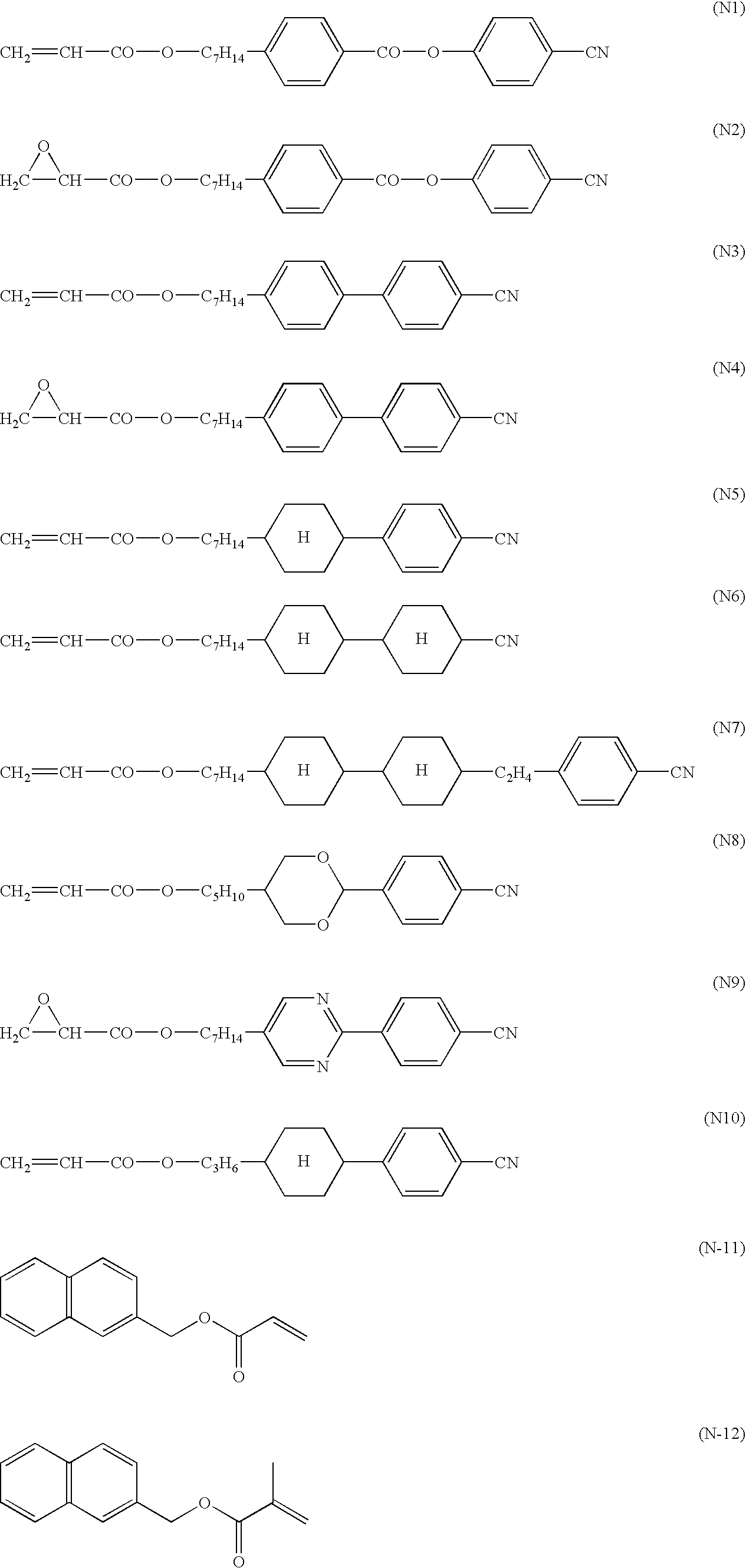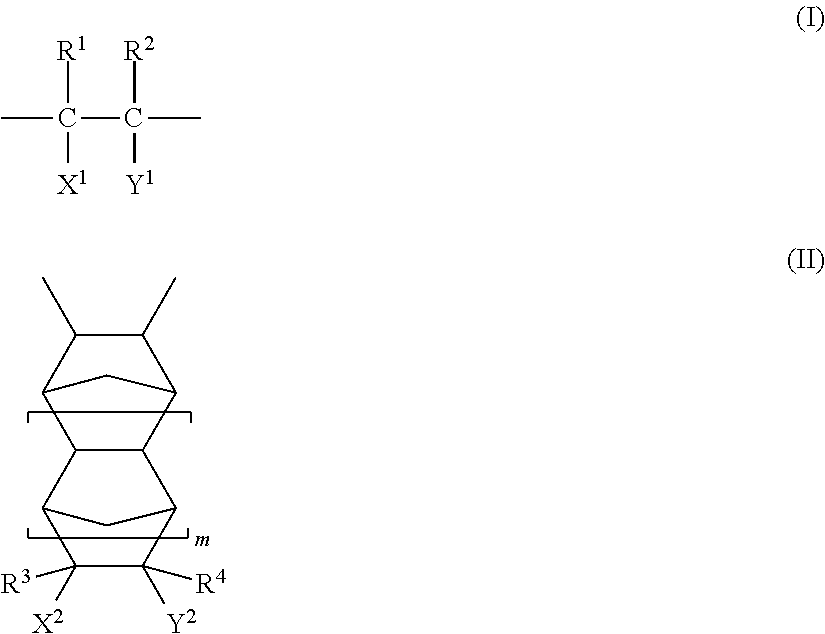[0080]The polarizing plate of the invention is coated with the adhesive of the invention and stacked to the transparent glass substrate of the
liquid crystal cell. When applying the adhesive of the invention to the polarizing plate, it is important that a component should not remain on a glass surface at the time of
rework and each component should not be phase-separated. The phase separation is caused due to the compatibility of each component. The better the compatibility of each component, the phase separation is little generated, so that the effects of the invention can be effectively achieved. In addition, the method of improving the compatibility has been described above. When determining the phase separation, it is possible to confirm whether the phase separation is generated, by examining the adhesive with a
microscope after treated at 80° C. and a dry condition for 1000 hours or 60° C. and 90% RH for 1000 hours.
[0081]A gel fraction of the adhesive is preferably 70% to 90%, and more preferably 80% to 90%. When the gel fraction is less than the corresponding range, a mismatch of the polarizing plate after the durability test is larger, so that the light leakage may be also greater. In the meantime, when the gel fraction exceeds the corresponding range, the proper relaxativeness and adhesion may not be obtained. By adding the
acrylate-based
polymer having no crosslinking portion, it is possible to lower and adjust the gel fraction. In addition, the method of measuring the gel fraction is as follows: the bulk adhesive is taken to measure the weight (w1) and left in
ethyl acetate for one day. Then,
polymer (gel portion), which is
ethyl acetate-insoluble, is taken and dried in the oven of 100° C. for two hours and the weight (w2) of the remaining
solid portion is measured. The gel fraction is calculated by a following equation:gel fraction (%)=(w2 / w1)×100
[0082]The method of forming the adhesive layer on the polarizing plate is not particularly limited. For example, a method of applying the adhesive on a surface of a polarizing film with a barcoater and then
drying it and a method of applying and
drying the adhesive on a
substrate surface having a peeling property to form the adhesive layer, transferring the adhesive layer formed on the
substrate surface to the surface of the polarizing plate and continuing to mature it may be adopted.
[0083]Although a thickness of the adhesive layer is not particularly limited, the thickness is preferably 10 μm to 40 μm, more preferably 10 μm to 30 μm and most preferably 10 μm to 20 μm. When the thickness is smaller than the range, the adhesive force may not be sufficiently obtained. When the thickness exceeds the range, the mismatch of the polarizing plate after the durability test is larger, so that the light leakage is also increased.
[0084]When the adhesive force of the adhesive is too strong, residual paste or panel damage is generated at the time of
rework. Thus, it is preferable that the adhesive force is 20N / 25 mm or less in the 180° peel test. In addition, when the adhesive force is less than 20N / 25 mm, the durability is lowered. The more preferable range is 1 to 10N / 25 mm.
[0085]When the
distortion of the adhesive layer, which is obtained from a
creep test wherein the polarizing plate is fixed to a substrate with the adhesion area 10 mm×25 mm through the adhesive layer and load of 1 kg is applied for one hour at 80° C. and a dry condition, is A:μm, and the
distortion of the adhesive layer when one minute has passed after removing the load is B:μm, the adhesive is preferable in which {(A−B) / A}×100 is 50(%) or less. 20(%) or less is more preferable. The
distortion (D:μm) of the adhesive layer, which is obtained from a
creep test wherein the polarizing plate is fixed to a substrate with the adhesion area 10 mm×25 mm through the adhesive layer and load of 1 kg is applied for one minute at 25° C. and 60% RH, is preferably 20 μm or less. The distortion (A:μm) of the adhesive layer, which is obtained from the
creep test wherein load of 1 kg is applied for one hour at 80° C., is preferably 30 μm to 100 μm.
 Login to view more
Login to view more 


